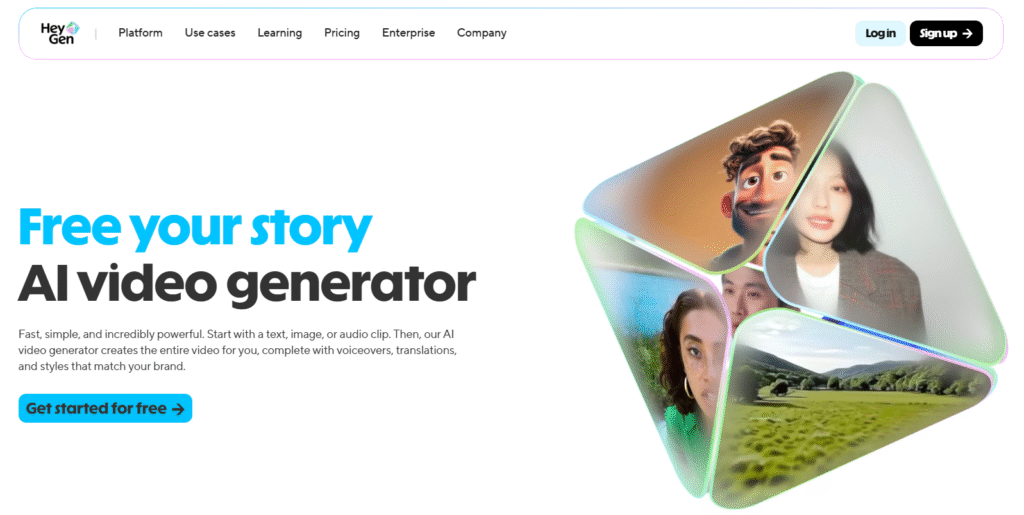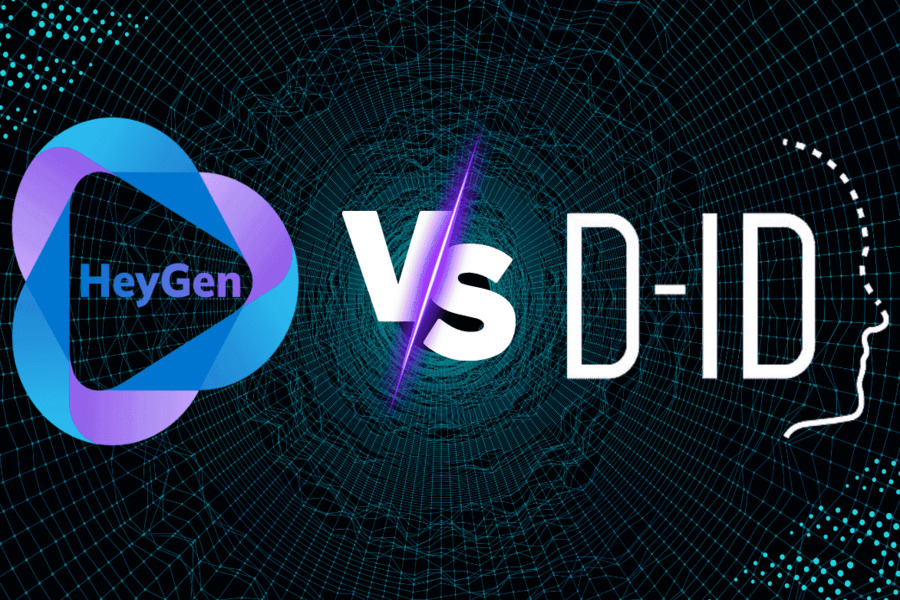In the bustling arena of AI video generation, the Heygen vs D-ID debate is one every content creator and marketer is starting to have. Both platforms promise to turn a simple photo into a persuasive, talking spokesperson, but they take different paths to get there.
Whether you’re a solopreneur on a budget or a marketing team aiming for global scale, understanding this key comparison is crucial. Let’s pull back the curtain and see which of these digital twin creators truly deserves a spot in your toolkit.
What is Heygen?

Imagine having a professional video production studio right inside your web browser. That’s the magic Heygen brings to the table. Launched into the competitive tech scene, Heygen has quickly made a name for itself with its high-fidelity, studio-quality avatars. You provide a source image or a short video of yourself, and Heygen’s sophisticated technology, often referred to as its Avatar engine, builds a digital double that can deliver any script you type.
The real party trick is its incredible versatility. Your Heygen avatar can speak in over a hundred languages, mirror your own cloned voice, and even be directed to perform specific gestures like nodding or raising an eyebrow. This makes it a dream for marketers and corporate trainers who need to produce a high volume of localized or personalized content without the time and expense of repeated filming sessions. The focus is on “scale without sacrifice,” allowing one person to create what looks like a hundred different professional video shoots.
What is D-ID?

If Heygen is a full-featured studio, then D-ID is the clever, efficient mobile production unit that gets the job done with surprising simplicity. The company’s name, short for “De-Identification,” hints at its origins in privacy-focused technology designed to protect facial images. They’ve brilliantly pivoted this expertise to become a leader in animating existing photographs.
D-ID’s core offering is beautifully straightforward: you upload a single portrait photo, type in your script, and its AI brings that static image to life. The result is a talking head video that can deliver your message with natural-looking lip movements. This approach is perfect for scenarios where ultra-realism is less critical than speed and ease of use. Think of an HR department creating a personalized welcome message from the CEO for every new hire, or a historian making a famous portrait in a textbook seemingly speak. D-ID’s API is also a major draw for developers looking to integrate this animation magic directly into their own applications.
Heygen vs D-ID: A Head-to-Head Comparison
Now for the main event. Let’s break down how Heygen and D-ID stack up across the key factors that matter most to users.
1. Video Quality and Realism
When it comes to pure, unadulterated visual polish, Heygen often takes the lead. Its avatars are built for high definition and exhibit refined details that help them cross the “uncanny valley.”
D-ID, on the other hand, performs minor miracles with the source material you provide. It can make a standard photo talk convincingly, but the final quality is more dependent on the input image’s resolution and clarity.
If your project demands a 4K, broadcast-ready presenter, Heygen is the winner. If your goal is a believable talking photo for internal or social media use, D-ID is impressively effective.
2. Creative Flexibility and Features
This is where the gap between the two platforms widens significantly. Heygen is a creative playground. It offers a wide range of avatar options, gesture controls, voice cloning, and scene customization.
You can change your avatar’s clothing or background to suit different campaigns. D-ID is far more focused. Its specialty is animating the face in the photo you provide. What you see is what you get; the background and clothing remain as they are in the original image.
For robust creative needs, Heygen is unmatched. For straightforward talking-head videos, D-ID’s simplicity is a virtue.
3. Ease of Use
D-ID wins the usability crown hands down. Its interface is intuitive and designed for immediate results. You don’t need any video editing experience to create a video in minutes.
Heygen, while not overly complex, presents a steeper learning curve. Its dashboard is packed with features, layers, and editing timelines that, while powerful, can be initially intimidating for a newcomer. Beginners will find a gentler, faster start with D-ID, while power users will appreciate the depth of control in Heygen.
4. Pricing
The pricing models reflect the platforms’ different target audiences. D-ID starts at a very budget-friendly price, making it accessible to almost anyone. It’s a classic pay-as-you-go model that’s easy on the wallet. Heygen’s entry-tier plans are higher, but they offer more minutes, higher video quality, and commercial usage rights.
For businesses and professionals who plan to use the videos in client work or large-scale marketing, Heygen’s higher-tier plans provide better long-term value and features like team management.
Final Verdict on Heygen vs D-ID
So, in the ultimate Heygen vs D-ID face-off, who should you choose? The answer isn’t about which platform is objectively better, but which is the right tool for your specific job.
Choose D-ID if you are a beginner, a solopreneur on a tight budget, or someone who needs to create simple, effective talking-head videos quickly and with zero fuss. It’s your reliable, affordable, and incredibly easy-to-use entry into the world of AI avatars. It’s the perfect digital intern for quick and personal video tasks.
Choose Heygen if you are a content creator, marketer, or medium-to-large business aiming for a premium, branded look. If you need creative flexibility, multi-lingual support, voice cloning, and videos that can stand alongside high-production content, Heygen is worth the investment. It’s the professional-grade studio that empowers you to scale your video content globally.
Ultimately, both Heygen and D-ID are powerful testimonies to how far AI technology has come. Your choice simply depends on whether you need a swift, handy tool or a comprehensive creative suite. No matter which you pick, you’re one step closer to putting your digital twin to work.



